Fried to a crispy texture and served with an aromatic seasoning, Chinese salt and pepper shrimp can be made at home to a restaurant standard. Read my tips and tricks!
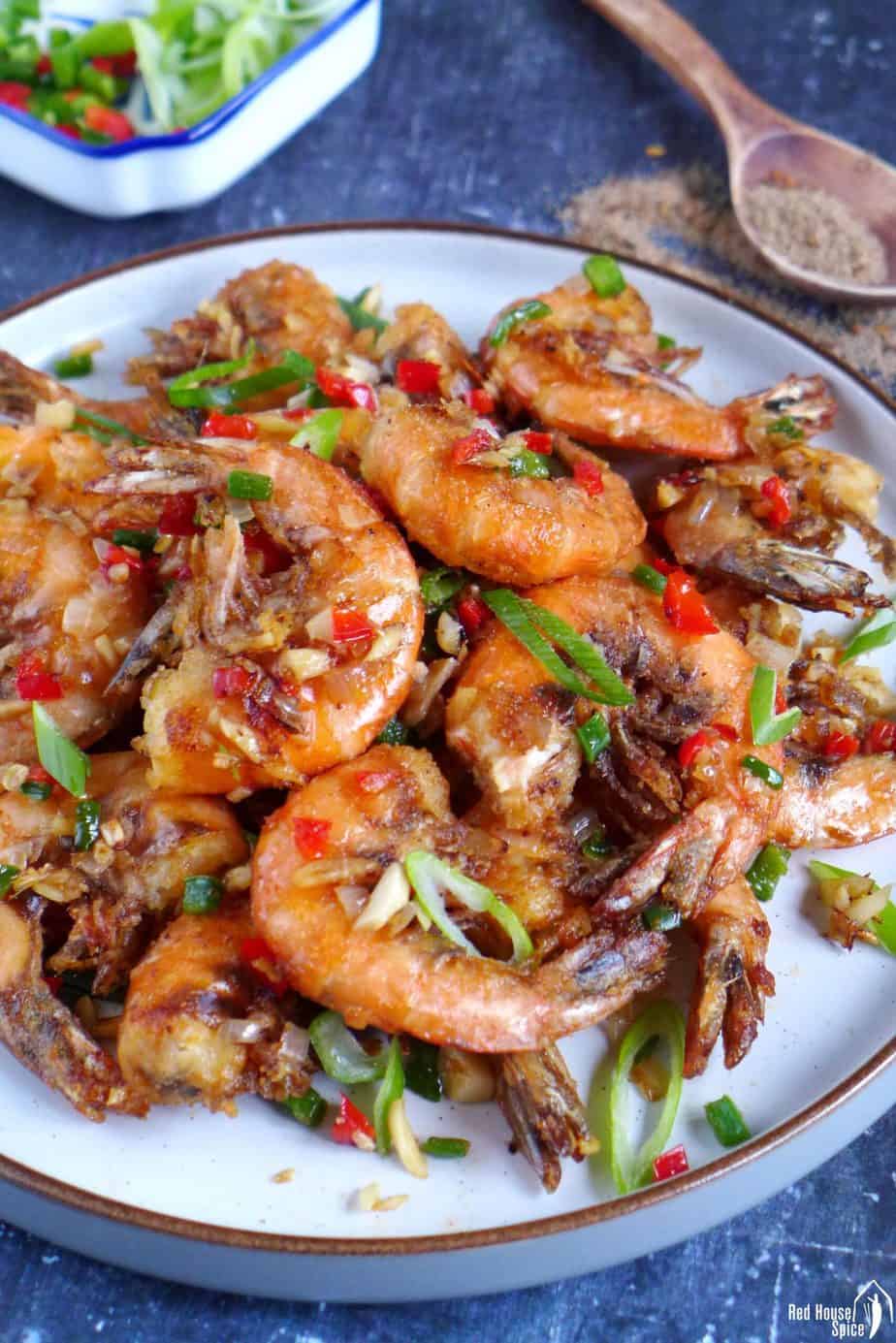
What is salt and pepper shrimp
Originating from Cantonese cuisine, salt and pepper shrimp is a classic dish loved by many. It has quite a few siblings which are equally popular, such as salt and pepper chicken, salt and pepper squid, salt and pepper pork ribs, salt and pepper tofu, etc.
The main characteristics of Chinese “salt and pepper” dishes are:
- The protein ingredient of the dish is coated with either a light batter or simply a thin layer of starch, then fried to a golden, crispy texture (e.g. The shell of shrimp becomes edible).
- The key seasoning, salt and pepper, is a mixture of ground spice(s) and salt known as Jiao Yan/椒盐 in Chinese which literally means peppery salt. It’s sprinkled over the protein ingredient at the end of the cooking process to create a distinctively aromatic, salty taste.
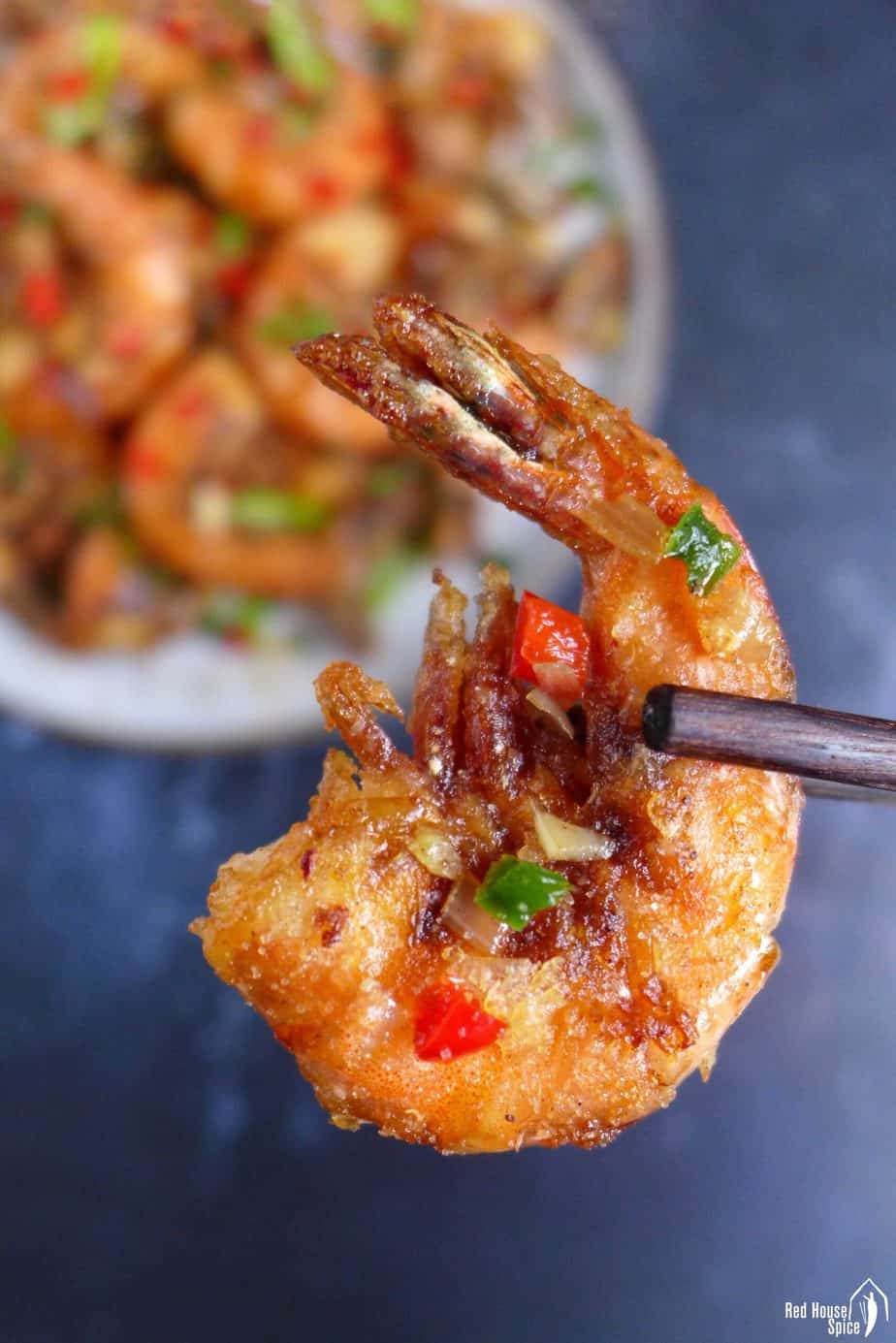
The thing I like about salt and pepper shrimp is that it looks and tastes fantastic yet it’s quite simple to make. In this post, I’ll explain in three sections to help you cook it to a restaurant standard:
- Make your own salt and pepper seasoning
- Two ways to fry the shrimp to perfection
- Add more flavour and colour to the dish
How to make the salt & pepper seasoning
Widely used in Chinese cuisine, salt and pepper seasoning (Jiao Yan/椒盐) has many different versions depending on the interpretation of restaurant chefs and home cooks. It’s either sprinkled over cooked dishes, or served separately for dipping. You can find it in Chinese shops as a ready-to-use seasoning, but I highly recommend you make it yourself for a fresher and better taste.
The simple version of salt and pepper seasoning can be Sichuan pepper with salt or black/white pepper with salt. Personally, I prefer a more complex, sophisticated version which consists of several spices. Here is my favourite formula:
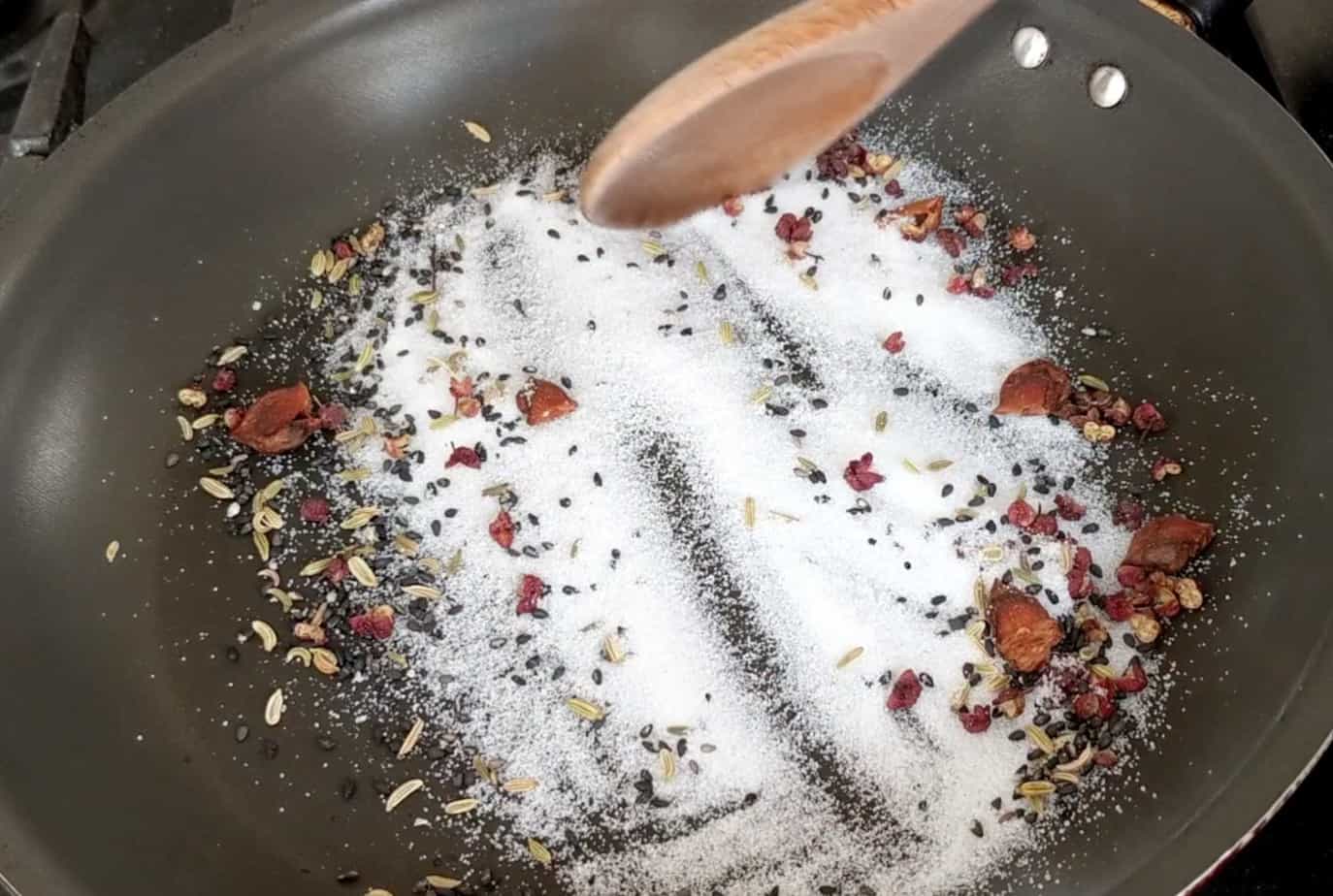
- 1 teaspoon whole Sichuan pepper
- ½ star anise
- ½ teaspoon sesame seeds
- ¼ teaspoon fennel seeds
- 4 teaspoon salt
Toast in a pan then grind
Before you put all these ingredients into a pan for toasting, check and remove any black seeds and stems from the Sichuan pepper. Also, separate the pods of the star anise and discard all the brown seeds hidden inside each pod.

When toasting, keep the heat low to slowly release the aroma of the spices. Once you see the salt turning a little yellow, turn off the heat and transfer everything into a mortar (or into a spice grinder). Leave it to cool for a while then grind with a pestle.
How to use it in other dishes
The quantity suggested produces much more salt and pepper seasoning than what you would need to cook today’s dish. Keep the leftover in an airtight jar and use it whenever you fancy adding aromatic salty flavour to your dishes.
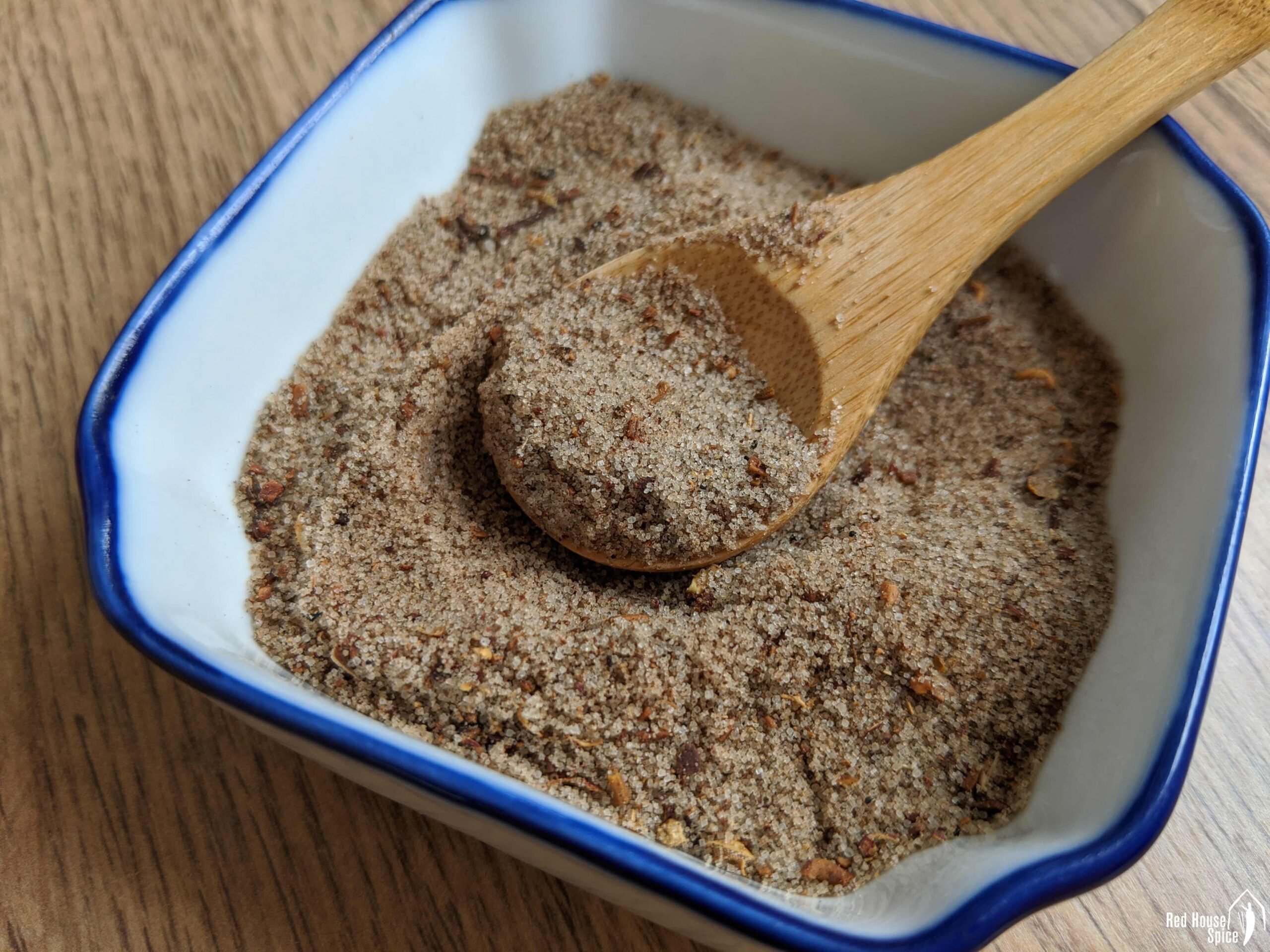
It’s such a versatile thing to have! Sprinkle over a fried egg, add to a stir-fry, season Scallion Pancakes or Scallion Flower Rolls, use it as a dry rub for meat (Have you tried my Smoked Chicken which use it to marinate?). The ideas go on.
How to fry the shrimp to perfection
Once you have the salt and pepper seasoning ready, move on to the next step: prepare and fry the star ingredient, shrimp. Despite the name of this dish, please feel free to use prawns which are a different species scientifically, but interchangeable with shrimp when it comes to cooking (Read this article to find out the difference between shrimp or prawn if you’re interested).
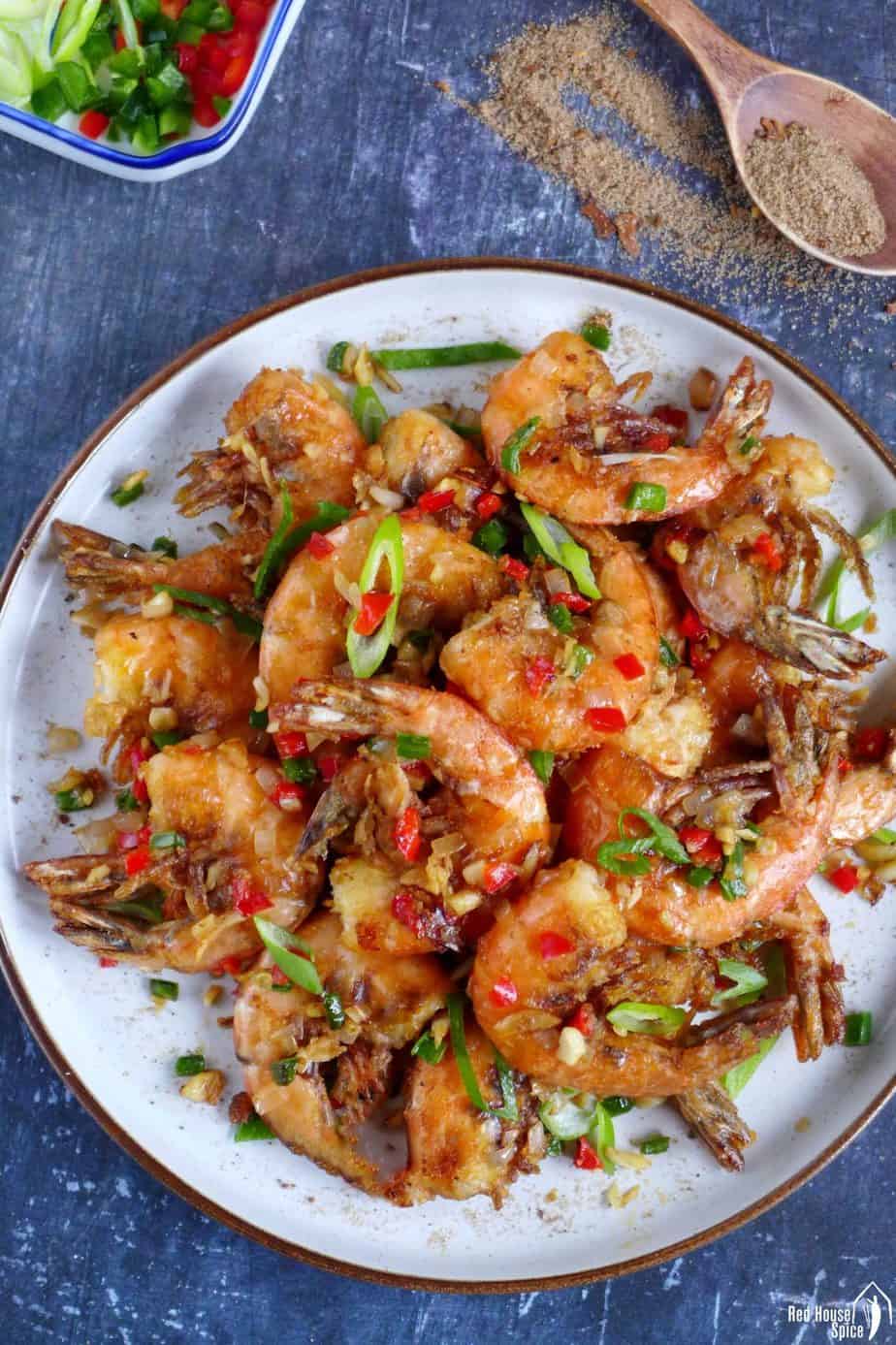
Remember not to use peeled shrimp for this dish. The shell offers delicious crispy texture and is totally edible if fried properly. Regarding the heads of the shrimp, you can either leave them on (if you appreciate the complete look) or remove them. If you decide to take the second option, do not throw the heads away as they make a great stock (Fry them in a little oil. Add water to simmer for 20 minutes or so then drain).
Coat the shrimp with corn starch
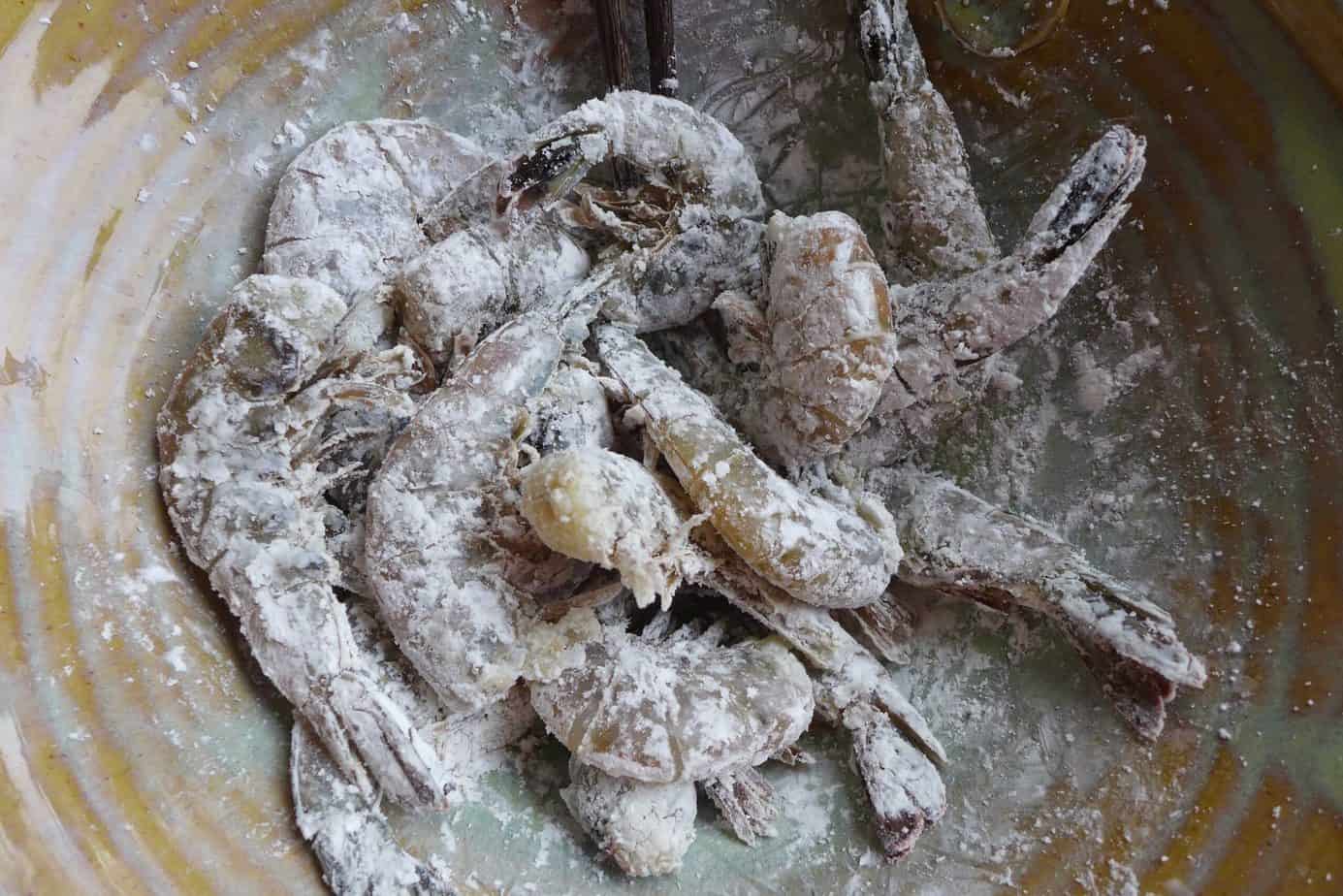
There are two factors that contribute to the crispy texture of the shrimp which the dish is famous for. First and foremost, you’ll need to coat the shrimp with starch before frying. Corn starch, potato starch or tapioca starch all work for this purpose.
Rinse the shrimp under running water then pat dry with kitchen paper. You wouldn’t want them too wet. Otherwise, the starch added will turn into a slurry. Yet they need to be damp enough to keep the starch sticking to the shell. Be generous with the starch and try coating the shrimp as evenly as possible.
Fry the shrimp at high temperature
The second factor for producing crispy shrimp is to fry them in oil at high temperature and keep the process brief. I’d like to introduce two ways to achieve this.

Option 1: Deep Frying
This is how salt and pepper shrimp is made in Chinese restaurants and takeaways. Set a wok over high heat and pour in plenty of oil. Make sure you use oil that has a high smoking point and suitable for deep-frying, such as vegetable oil, sunflower oil, peanut oil, rapeseed oil, etc.
When the temperature reaches 375°F/190°C, gently slide in the shrimp. You may use one shrimp to test the temperature. If lots of bubbles immediately appear the moment it goes in, the oil is hot enough.
If the shrimp stick together, use chopsticks to separate them. Take out when they turn pink and look crispy. Do not overcook to retain the tenderness of the flesh. The frying time required depends on the size of your shrimp. My shrimp are quite large, it took me about 90 seconds.
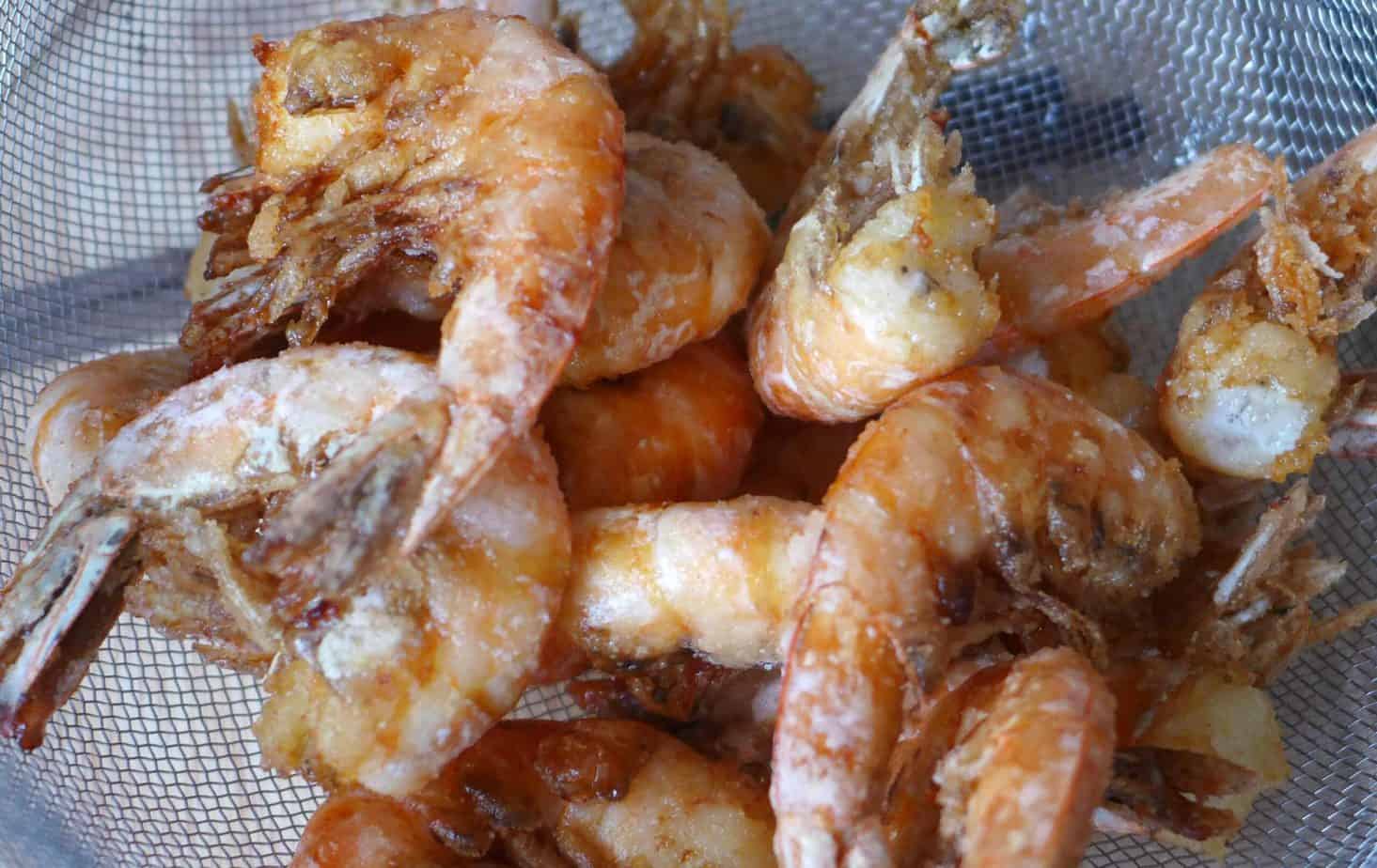
Option 2: Shallow Frying
If you’re not a fan of deep-frying and wish to be economical with oil, try shallow frying instead. Use a pan and pour in oil just enough to cover half of the shrimp when they’re laid flat.
Keep the heat on high. When the oil starts to smoke, place in the shrimp (Fry in two batches if necessary to avoid overlapping). Flip over to fry the other side when the first side turns pink and crispy.
The downside of shallow frying is that the oil splashes a lot. So I put a splatter screen over the pan. Alternatively, you can hold a lid over the pan (but do not cover completely) to block splashing.
Add more flavour & colour to the dish

Now we’re only one step away from serving. Carefully pour the oil out of the wok/pan leaving just a thin layer on the surface. Fry minced shallots, pepper, garlic and ginger for about 1 min over medium heat. Then add the shrimp and some salt and pepper seasoning. Toss well for an even coating (Unlike typical Chinese stir-fry dishes, you don’t need any sauce for this dish. It should look dry when serving). Garnish with finely chopped scallions before serving.

Salt and pepper shrimp taste best when hot. It loses its crispiness if left cold. So make sure you have plain rice ready to enjoy it immediately. Alternatively, you can serve this dish as finger food. Without doubt, these flavoursome, crispy shrimp disappear very quickly at parties!
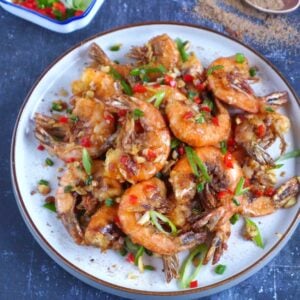
Salt and Pepper Shrimp (椒盐虾)
Ingredients
For the salt & pepper seasoning (Jiao Yan)
- 1 teaspoon whole Sichuan pepper
- ½ star anise
- ½ teaspoon sesame seeds
- ¼ teaspoon fennel seeds
- 4 teaspoon salt
For frying the shrimp
- 300 g shell-on shrimp (or prawns), with or without heads - see note 1
- 3 tablespoon corn starch - or tapioca starch
- Neutral cooking oil, for deep or shallow frying - see note 2
You also need
- 2 tablespoon minced shallots, or onion
- 2 tablespoon minced red chili pepper
- 2 tablespoon minced green chili pepper
- 2 tablespoon minced garlic
- 1 tablespoon minced ginger
- 1 stalk scallions, finely chopped
Instructions
Make the salt & pepper seasoning
- Put Sichuan pepper, star anise, sesame seeds, fennel seeds and salt into a pan. Toast over low heat while stirring from time to time.
- Once the salt darkens slightly and the spices become very fragrant, remove from the heat then grind in a mortar or a spice grinder. Set aside (see note 3).
Prepare the shrimp
- Rinse the shrimp under running water. Use kitchen paper to pat dry.
- Add corn starch. Gently stir to have all the shrimp evenly coated with the starch.
Fry the shrimp (two ways)
- Option 1 DEEP FRYING: Pour oil into a wok over high heat (I use about 800ml). When it reaches 375°F/190°C, gently slide in the shrimp. Use chopsticks to separate if they stick together. Take out when they look pink and crispy. It took me about 90 seconds. Depending on the size of your shrimp, adjust if necessary.
- Option 2 SHALLOW FRYING: Pour oil into a pan over high heat (enough to cover half of the shrimp when laid flat). When it starts to smoke, place in the shrimp (Fry in two batches if necessary to avoid overlapping). Flip over to fry the other side when the first side turns pink and crispy. Please be aware that the oil will splash quite a bit so place a splatter screen over the pan if available. Alternatively, you can hold a lid over the pan (but do not cover completely) to block splashing.
Combine the dish
- Pour the oil out of the wok/pan leaving just a thin layer on the surface. Add shallots, pepper, garlic and ginger. Fry over medium heat for about 1 min.
- Put in the fried shrimp and ½ teaspoon of the salt & pepper seasoning (or to taste). Toss well to season evenly then garnish with scallions. Dish out and serve immediately.
NOTES
NUTRITION
NUTRITION DISCLOSURE: Nutritional information on this website is provided as a courtesy to readers. It should be considered estimates. Please use your own brand nutritional values or your preferred nutrition calculator to double check against our estimates.



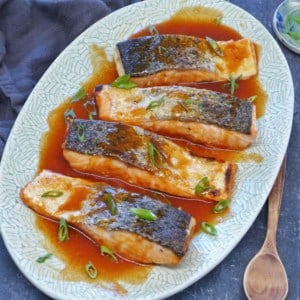
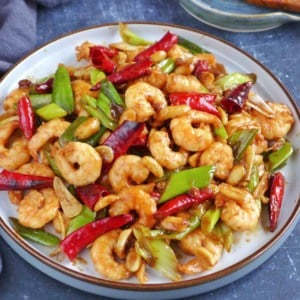
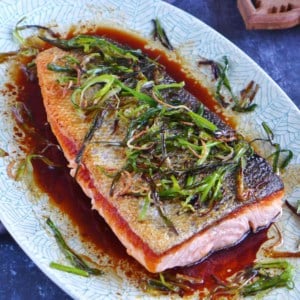
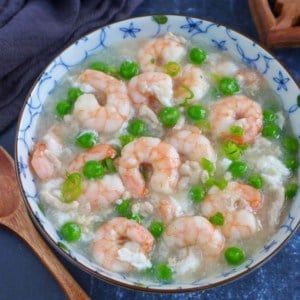
I enjoy your recipes a lot. Thank you Wei!
I have some frozen shrimps in the freezer, but without the skin. Could I try to fry it the way you’ve fried the squid in the recipe Salt and Pepper squid?
Surely! You can use my Salt & Pepper Squid recipe to cook peeled shrimp. Happy cooking!
I have a question. Can the salt and pepper shrimp be cooked in an air fryer? Thanks!
Yes Karen, you can air fry the shrimp (instead of deep-frying). Coat the shrimp with cornstarch then spray cooking oil all over. The texture won’t be the same as deep-fried ones but they still taste nice.
Hi Wei, love this recipe but made some adjustments for speed and ingredients I could find at the supermarkets in Australia.
I bought a pack of raw frozen pawns which I thawed in cold water for ten mins, drained and wrapped in some paper towel.
I made up an instant batter and put in the fridge.
I thinly sliced 2 red cayenne chillies which are a medium heat. I cut the same volume of spring onions (white section)
I filled a pan with 5cm of sunflower oil.
I accompanied the prawns with fried vermicelli noodles and prawn crackers.
Added the prawns to the cold batter and fried in the oil until crispy and golden in batches of 5
Fried the chilli and spring onions so they were a bit crispy.
Added a tsp of salt pepper seasoning and mixed in with the prawns.
Put the prawns on the fried noodles, scattered the plate with the fried chilli and spring onion and some fried shallots.
It was so yum 😋
Thanks
Thank you Nicole for sharing your ideas. Sounds delicious with additional vermicelli noodles.
Totally scrumptious. Couldn’t be any
easier to follow! My hubby loves everything I make from your amazing site. I honestly haven’t had good Chinese food since I left Australia 36 years ago. Your recipes are definitely the good taste I miss!
Thank you heaps
Heather Bridges
That’s wonderful to hear Heather! I can relate to the feeling of craving food that you grew up with. Glad you’ve enjoyed it!
This is by far one of my favorites! I loved eating these with head and all in China. It’s something we’re not accustomed to in the West. Trying not to cry while cutting the peppers, but when all is done you’d be surprised the dish is really not too spicy! I can’t handle heat well, but this salt and pepper recipe just leaves you wanting more! It’s so addictive. The crispiness in combination with the tingly Sechuan / salt and pepper taste is just to die for. Please DO try this at home 🙂
That’s great to hear Katrien! Yes, the heat of fresh chili pepper reduces through cooking.
This is the second time I’ve made the salt and pepper rub. The first time I used it on your Smoked Chicken, using the leftovers on various things. This time on the shrimp. I did the shallow fry and they were crispy, tender, juicy and perfect! Thanks for another keeper, Wei.
You’re welcome Heather! The salt and pepper spice mix is very versatile, isn’t it? Glad you’ve enjoyed it!
Looks amazing! Can’t wait to try the recipe 😋
Happy cooking!